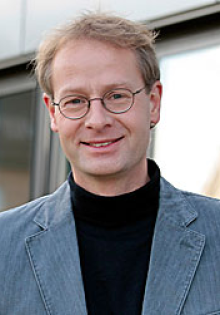L.048.62026 Topics in Systems Engineering (for Master ESE), winter semester 2017/2018
For students in the ESE program it is compulsory to do a Topics in System Engineering course during their master degree. It is offered by several groups in the electrical engineering department (see PAUL). In the TET group, we offer topics with a focus on numerical methods, simulation, electromagnetic fields, photonics. To pass this course you have to read on a subject as decided upon at the beginning of the semester. You will be given some initial references; it is expected that you do further literature research (beyond Wikipedia) on your own. At the end of the semester you give a short presentation on the topic, and you hand in a brief written report. The idea is that you learn to independently familiarize yourself with complex topics, and to practice presenting your knowledge. To help you in this process, we will schedule a few individual meetings during the semester; you are welcome for further questions in between.
To do this course in our group, please select a first, second, and third preference among the topics in the list below. Each topic is for one person only (no groups). Send an email with your choices to Mrs. Claudia Hagemeier, before Monday, October 16, 09:00. We will collect your selections and distribute the available topics among the candidates, as far as possible according to your preferences. You will be notified about your assignment by email. Once you got a confirmation, please do not forget to register for the course in PAUL. We will meet with all students on Thursday, October 19, at 13:00 in the seminar room in the TET corridor, P 1.5.01.4 / P 1.5.01.5, where further details of the course will be discussed.
The following topics are offered in the winter term 2017/2018:
- Algorithms for numerical root finding
Keywords: problem definition, classification; algorithmic ideas (functions of one variable), overview of techniques; functions of more than one variable; what about complex numbers? what is built into MATLAB?
Literature (starting point): W.H. Press, S.A. Teukolsky, W.T. Vetterling, B.P. Flannery, Numerical Recipes in (...) - The Art of Scientific Computing, chapter 9 and prerequisites (... in C, Second Edition).
- Algorithms for numerical minimization and maximization of functions
Keywords: problem definition, classification; algorithmic ideas (functions of one variable), overview of techniques; functions of more than one variable; what is built into MATLAB?
Literature (starting point): W.H. Press, S.A. Teukolsky, W.T. Vetterling, B.P. Flannery, Numerical Recipes in (...) - The Art of Scientific Computing, chapter 10 and prerequisites (... in C, Second Edition).
- Algorithms for the Numerical Integration of Functions
Keywords: problem definition, classification; algorithmic ideas (functions of one variable), overview of techniques, multidimensional integrals; what is built into MATLAB?
Literature (starting point): W.H. Press, S.A. Teukolsky, W.T. Vetterling, B.P. Flannery, Numerical Recipes in (...) - The Art of Scientific Computing, chapter 4 and prerequisites (... in C, Second Edition).
- Interpolation and Extrapolation
Keywords: problem definition, classification; algorithmic ideas (functions of one variable), overview of techniques, multidimensional interpolation; what is built into MATLAB?
Literature (starting point): W.H. Press, S.A. Teukolsky, W.T. Vetterling, B.P. Flannery, Numerical Recipes in (...) - The Art of Scientific Computing, chapter 3 and prerequisites (... in C, Second Edition).
- Modes of dielectric integrated optical waveguides
Keywords: waveguide concepts; Maxwell equations, equations for guided modes; specialization: multilayer slab waveguides, TE / TM modes, outlook: methods for waveguides with 2-D confinement.
Literature (starting point): R. Maerz, Integrated Optics - Design and Modeling, 3.2, 3.8 and prerequisites; K. Okamoto, Fundamentals of Optical Waveguides, 1, 2.1 and prerequisites.
- Cylindrical optical fibres
Keywords: fibre concepts, theory: modes of circular step-index fibres, application examples, outlook: more recent concepts.
Literature (starting point): A.W. Snyder, J.D. Love, Optical Waveguide Theory, 12.8-12.10 and prerequisites, K. Okamoto, Fundamentals of Optical Waveguides, 3.1-3.6 and prerequisites.
- Coupled Mode Theory
Keywords: Motivation, ansatz, derivation of coupled mode equations, co- and contradirectional coupling, solutions; examples / applications.
Literature (starting point): K. Okamoto, Fundamentals of Optical Waveguides, 4, 4.1-4.3.1, and prerequisites.
- Circular dielectric optical microresonators
Keywords: device concepts, fundamental theory: parametric coupled mode description, spectral features, application examples.
Literature (starting point): K. Okamoto, Fundamentals of Optical Waveguides, 4.5.2 and prerequisites; I. Chremmos, O. Schwelb, N. Uzunoglu, Photonic Microresonator Research and Applications, chapter 2.
- Band Gaps in Photonic Crystals
Keywords: Discrete translational symmetry, photonic band structures, multilayer films, localized defect modes, two-dimensional photonic crystals.
Literature (Starting point): Joannopoulos / Johnson / Winn / Meade, Photonic Crystals - Molding the Flow of Light, chapter 3-5 and prerequisites.
- Photonic Crystal Fibres
Keywords: Microstructured optical fibres, index guiding, bandgap guiding, hollow-core fibres, Bragg fibres.
Literature (Starting point): Joannopoulos / Johnson / Winn / Meade, Photonic Crystals - Molding the Flow of Light, chapter 9 and prerequisites.
Please contact Dr. Manfred Hammer for all further information.

